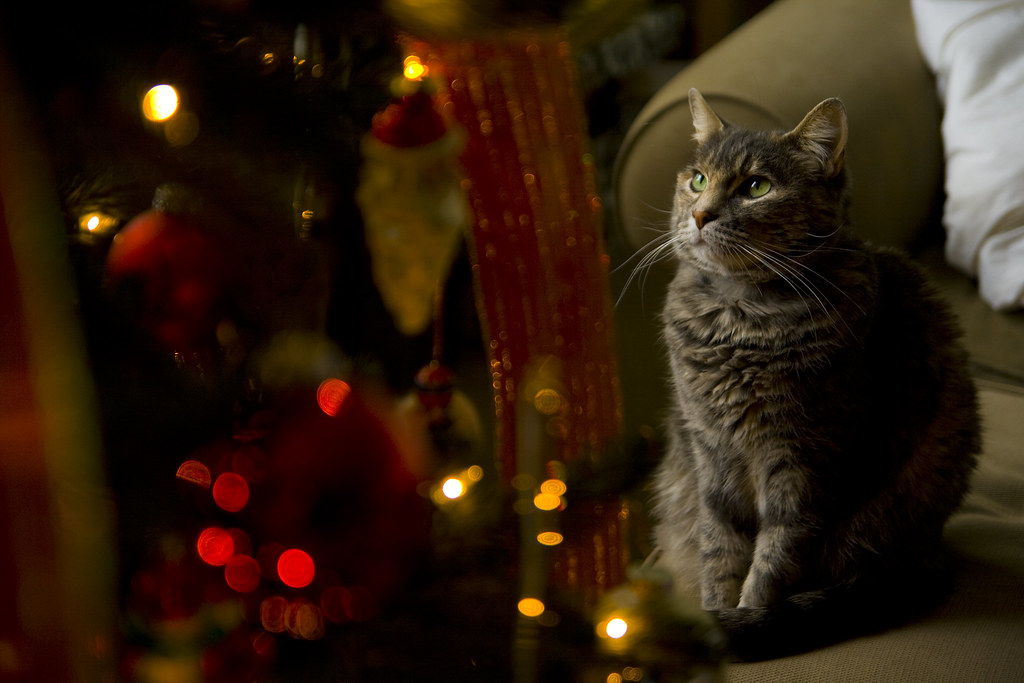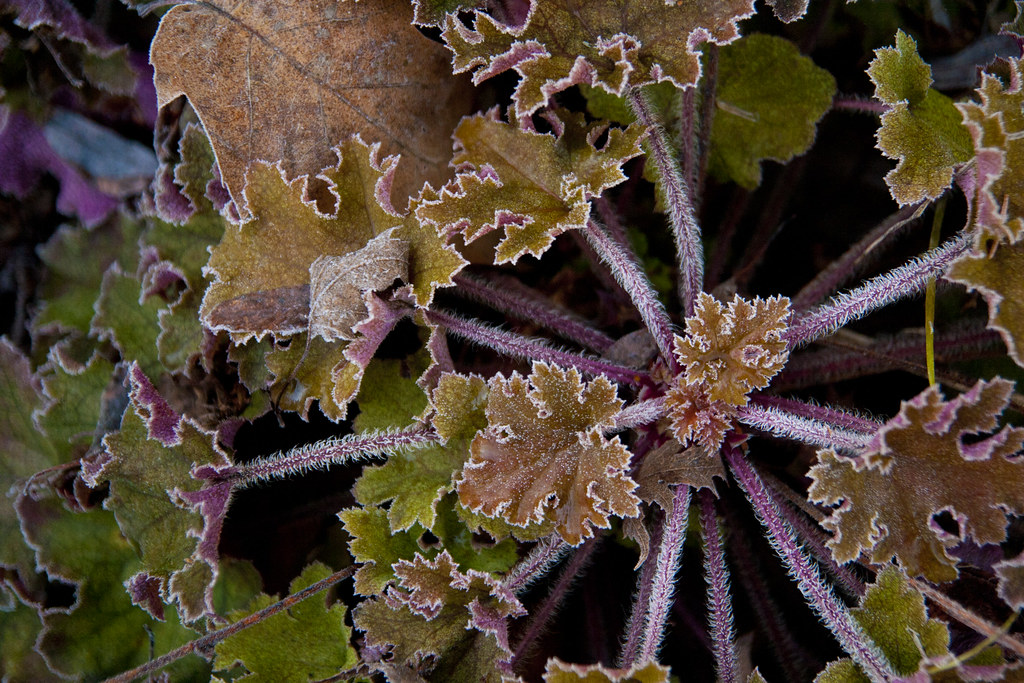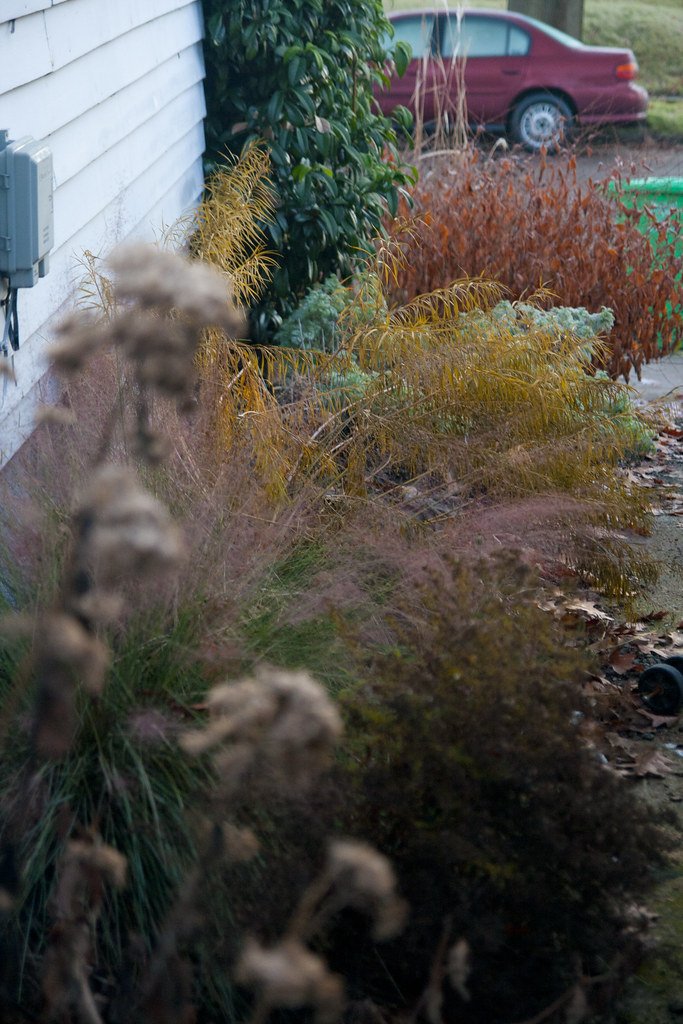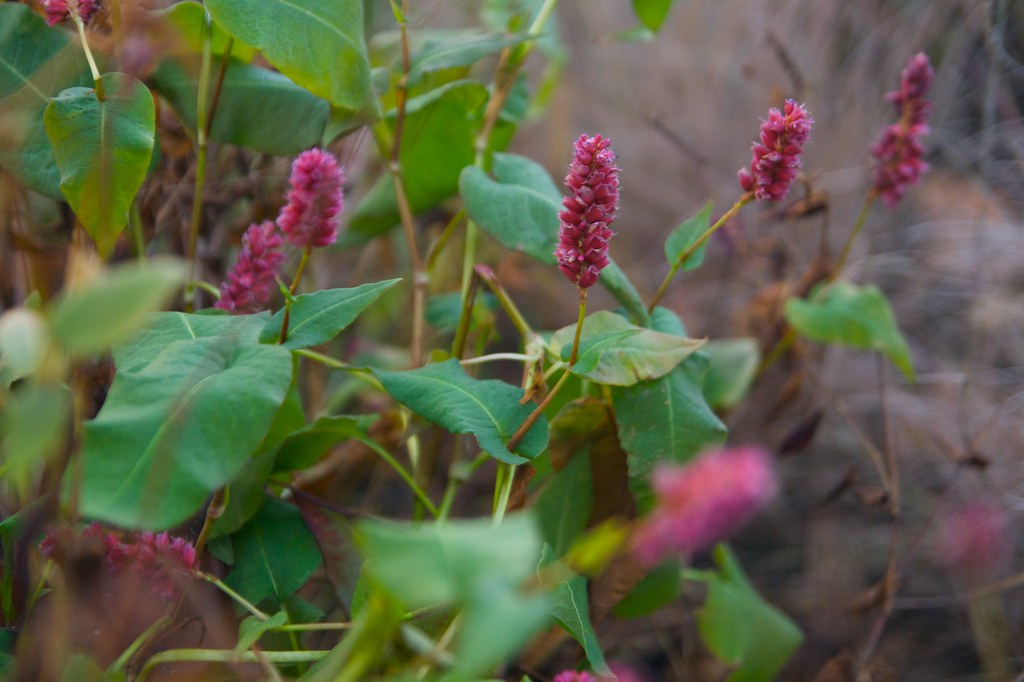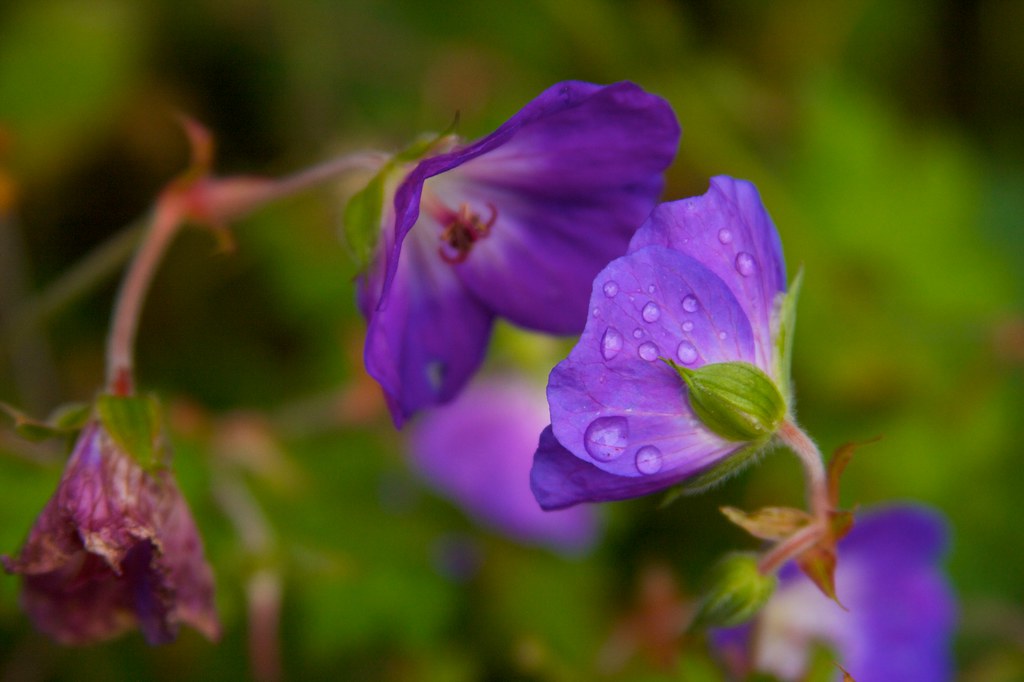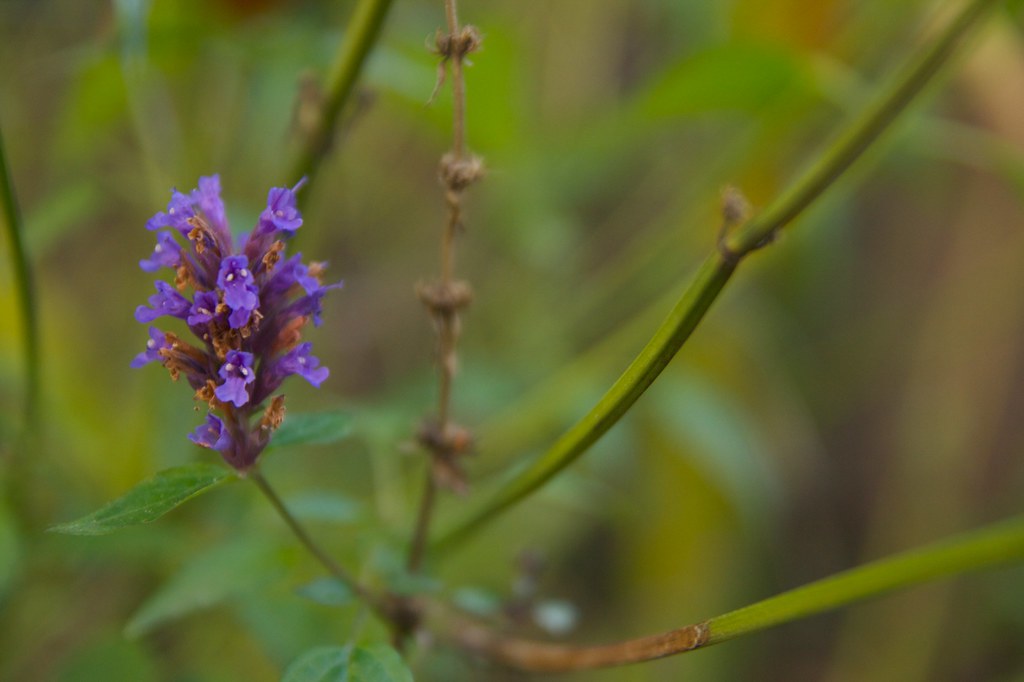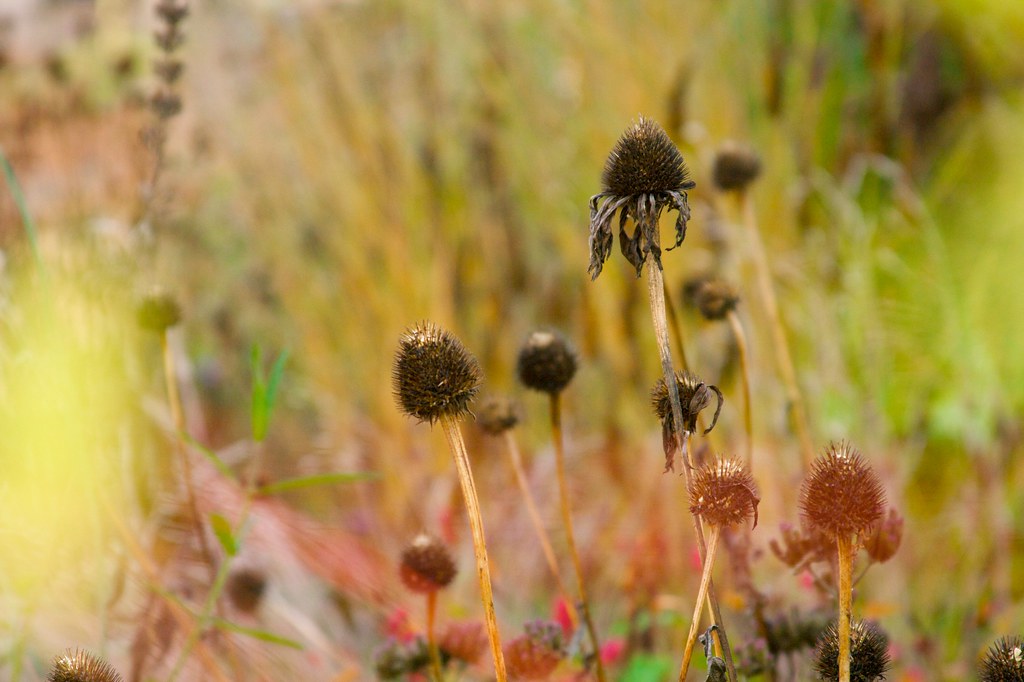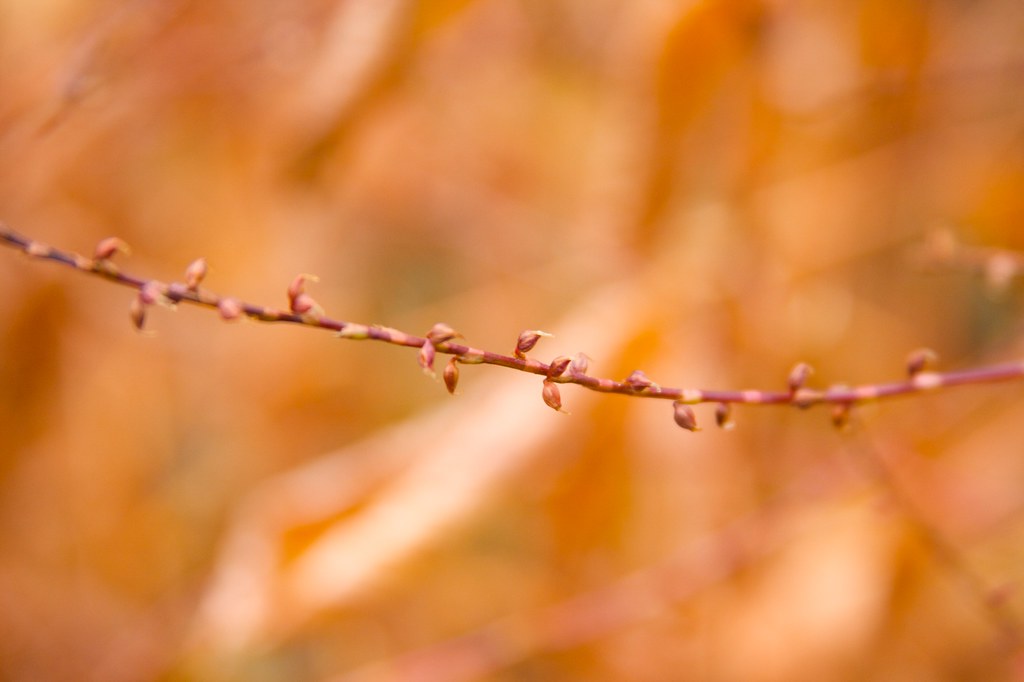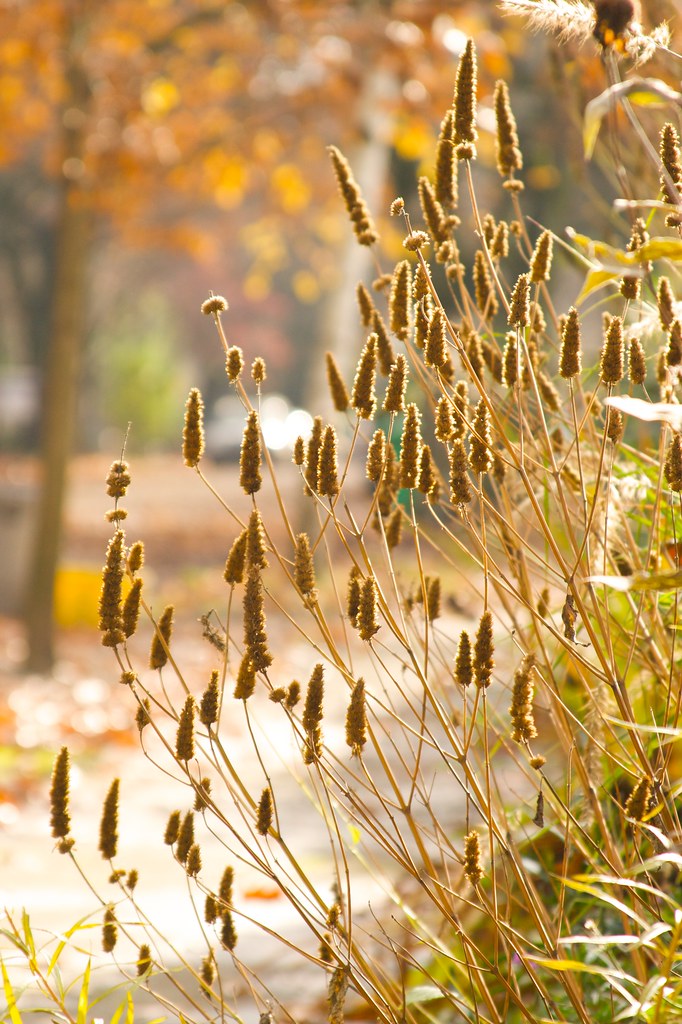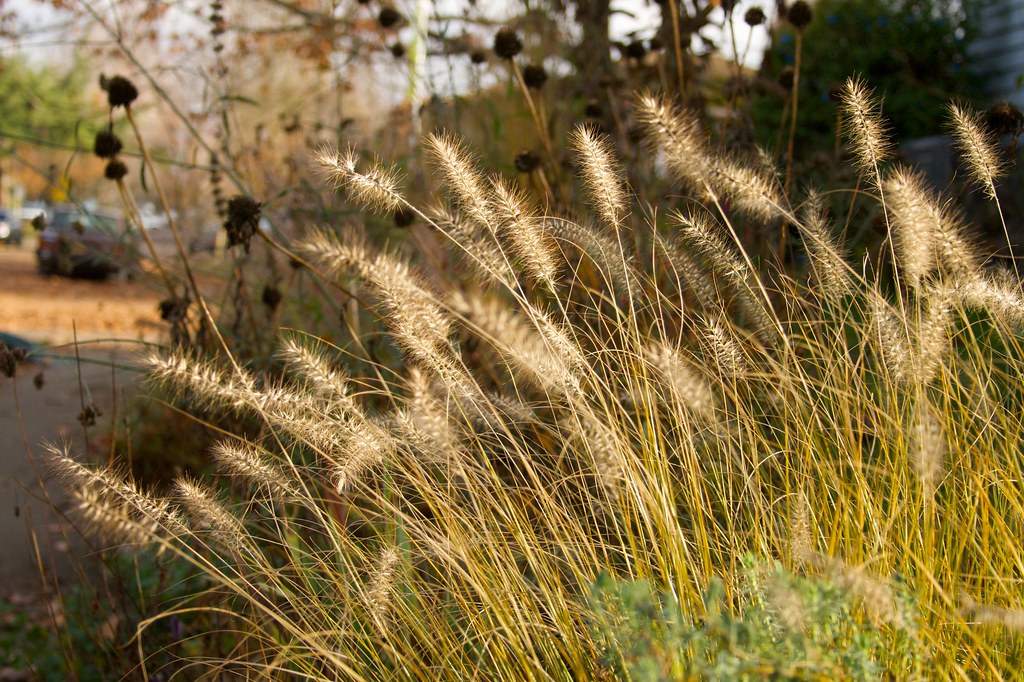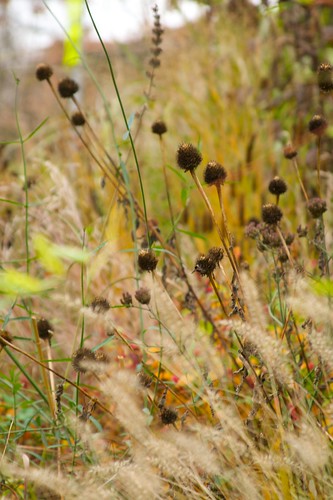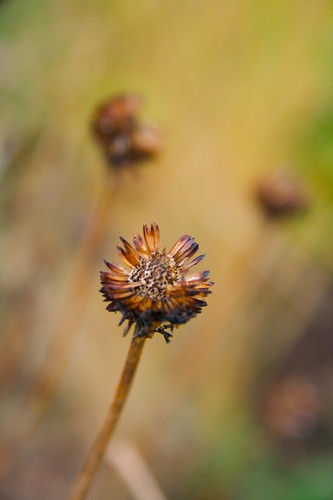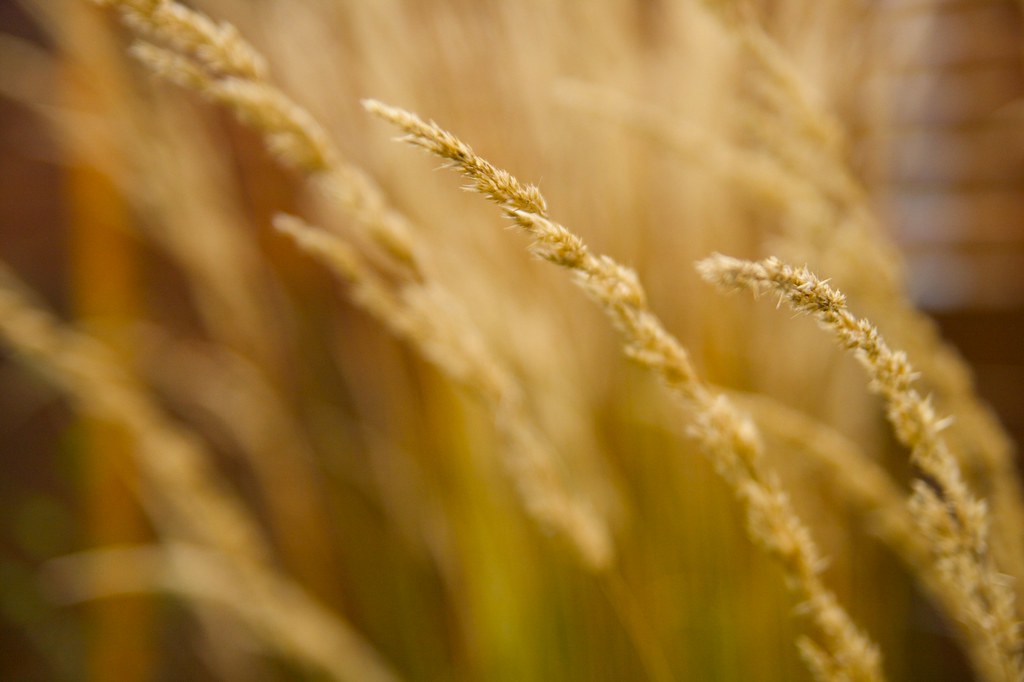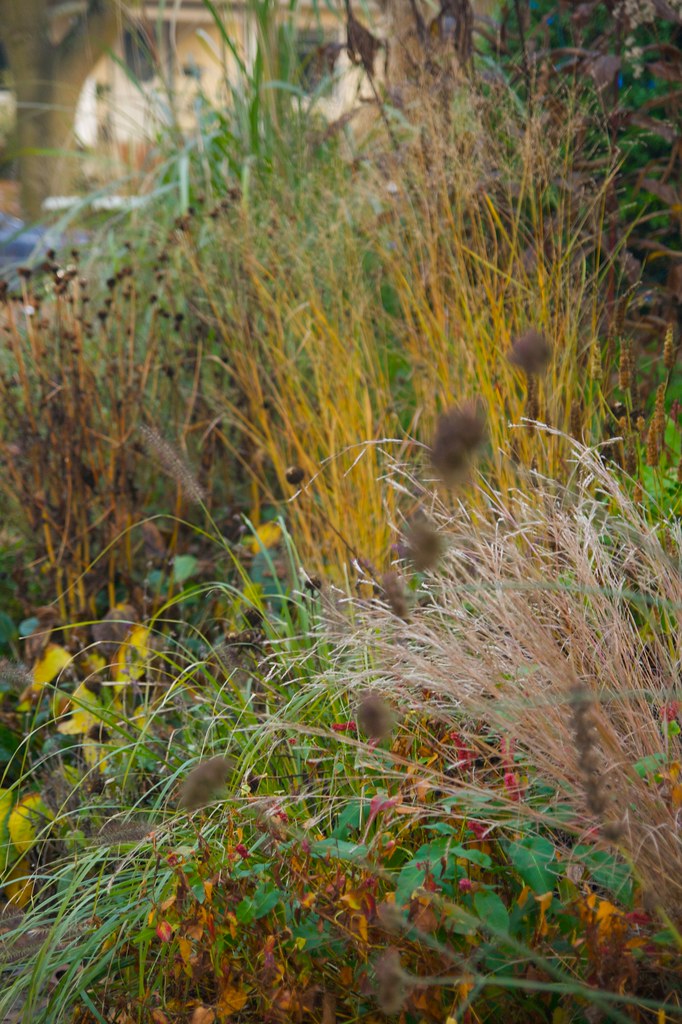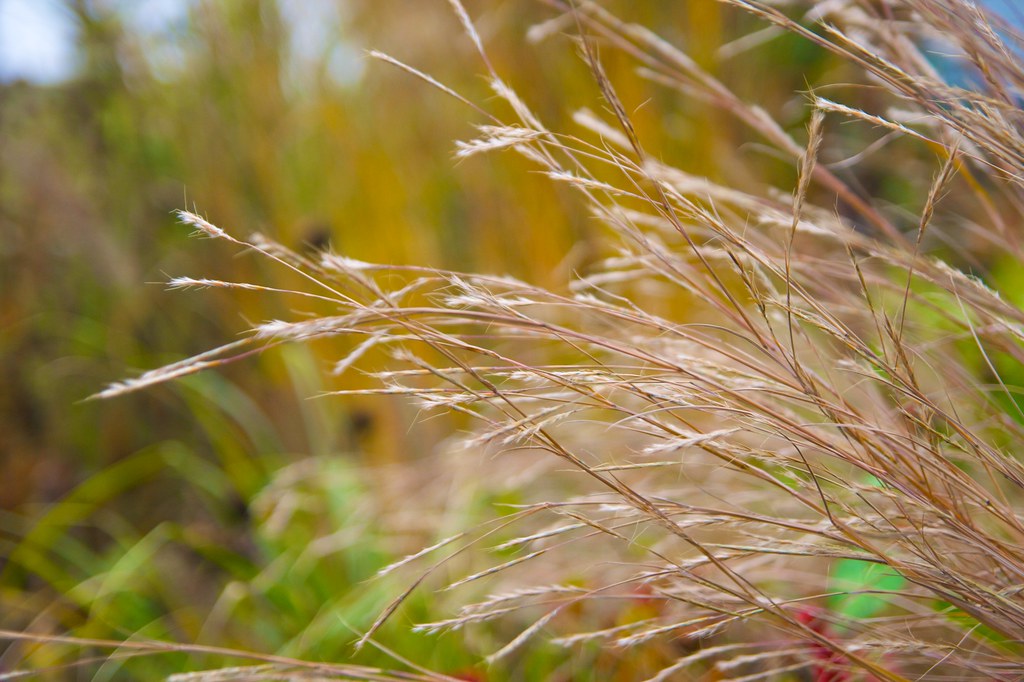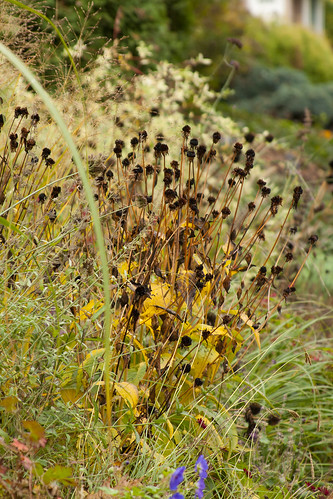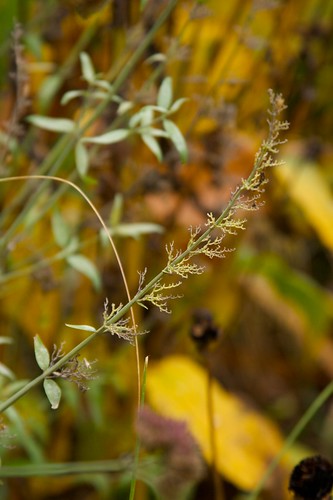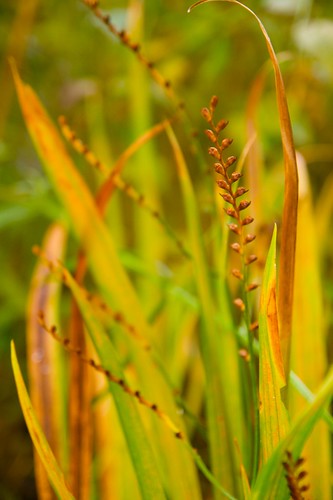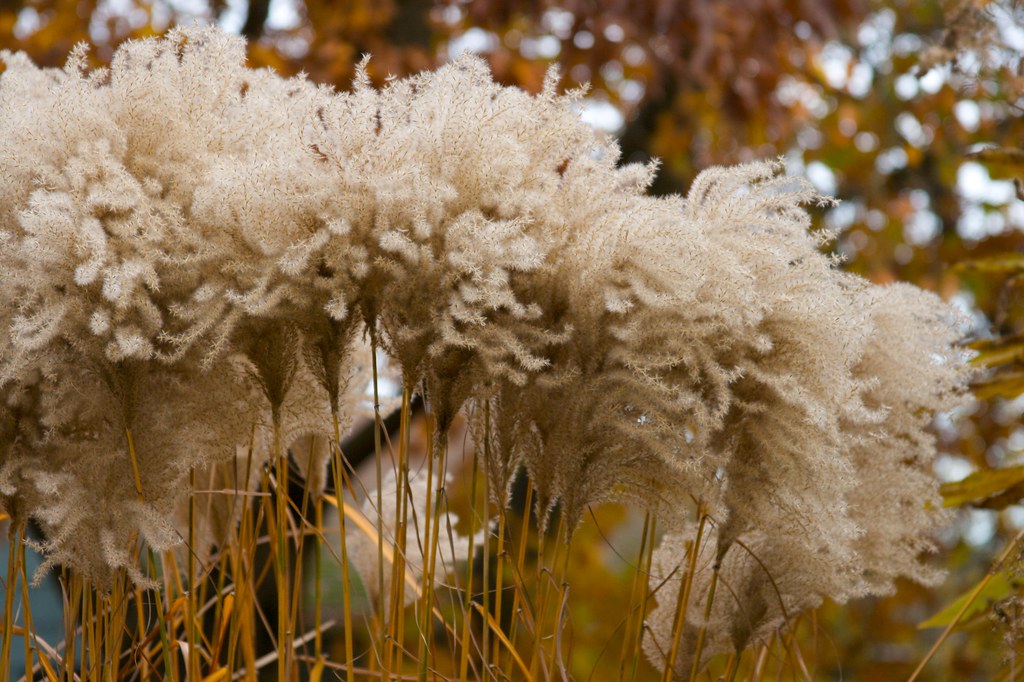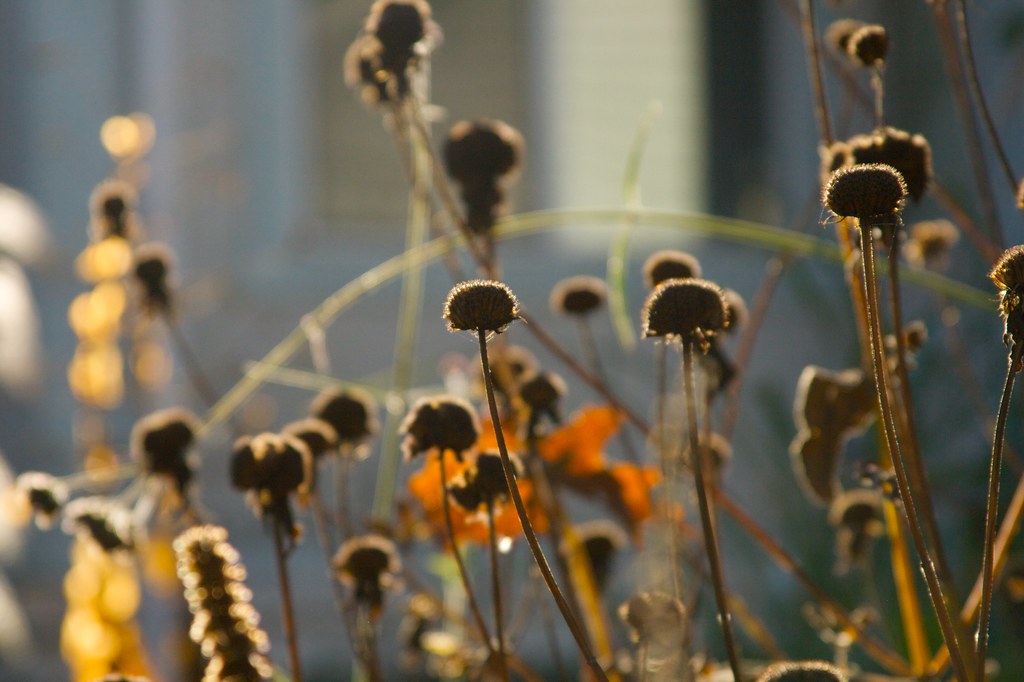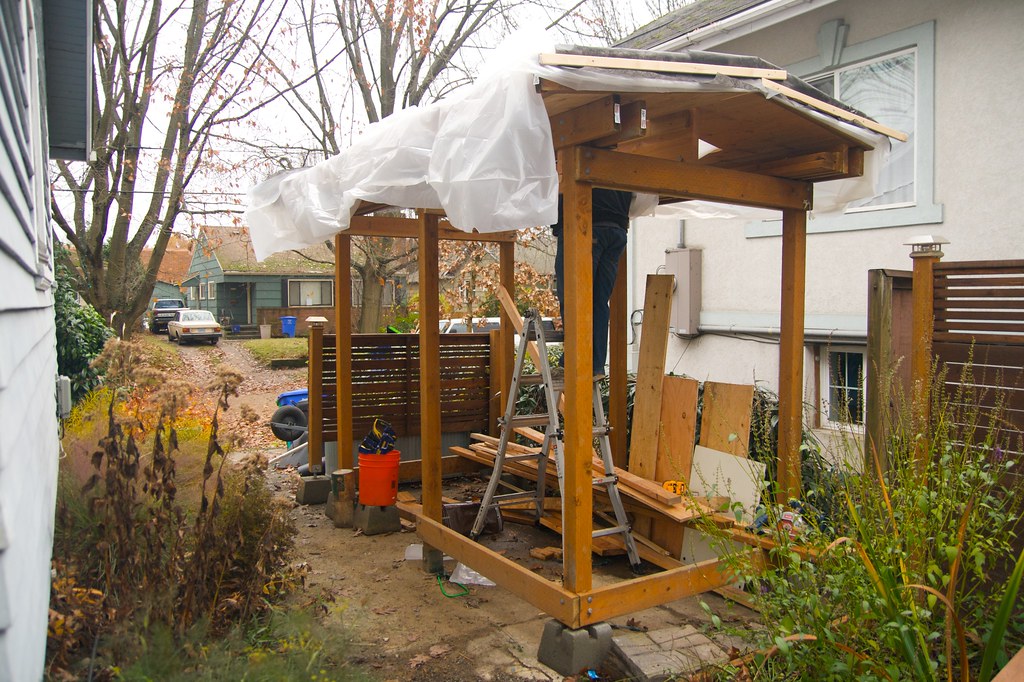 No two gardens are the same. No two days are the same in one garden.
~Hugh Johnson
No two gardens are the same. No two days are the same in one garden.
~Hugh Johnson
I've mentioned before that one of my favorite aspects of gardening is the excitement of its continual change...its progress and evolution from day to day, season to season, and, of course, year to year. The constant change of a garden is one of the most intriguing...and challenging, parts of planning a garden. It's not enough to just plant something that looks good right at that very moment...because it will (generally) never be that way again. From the moment you plant a garden it starts to change and evolve. In essence, a garden is not a just the static, 3-dimensional thing it appears to be at any one moment, it is also product of time. Come along with me, then, and let's look at my garden as it progresses through the course of a single growing season.
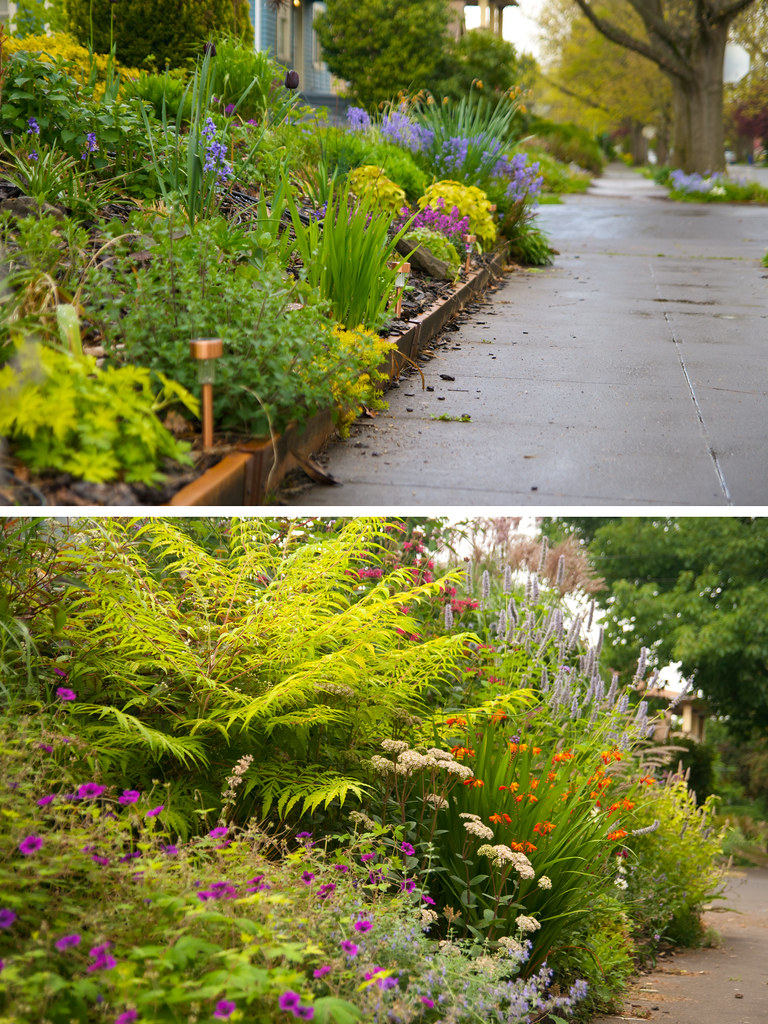 Front (East) Border in Spring (Top) and Midsummer (Bottom)
Front (East) Border in Spring (Top) and Midsummer (Bottom)
As the photos above show (and as we all know), just a few months can make a huge difference between a sparse border and a packed-to-the-gills one! I'm always amazed by just how much growth plants can accomplish in such a short time. For example, even though only a few months elapse between the photos, the Sumac goes from being practically invisible to becoming the focal point of the garden. It's amazing how the empty space in an early-spring garden seems so vast…it's so tempting to keep filling it in…only to realize later the plants are all jostling for space. I find I constantly under-estimate the eventual, mature size of plants.
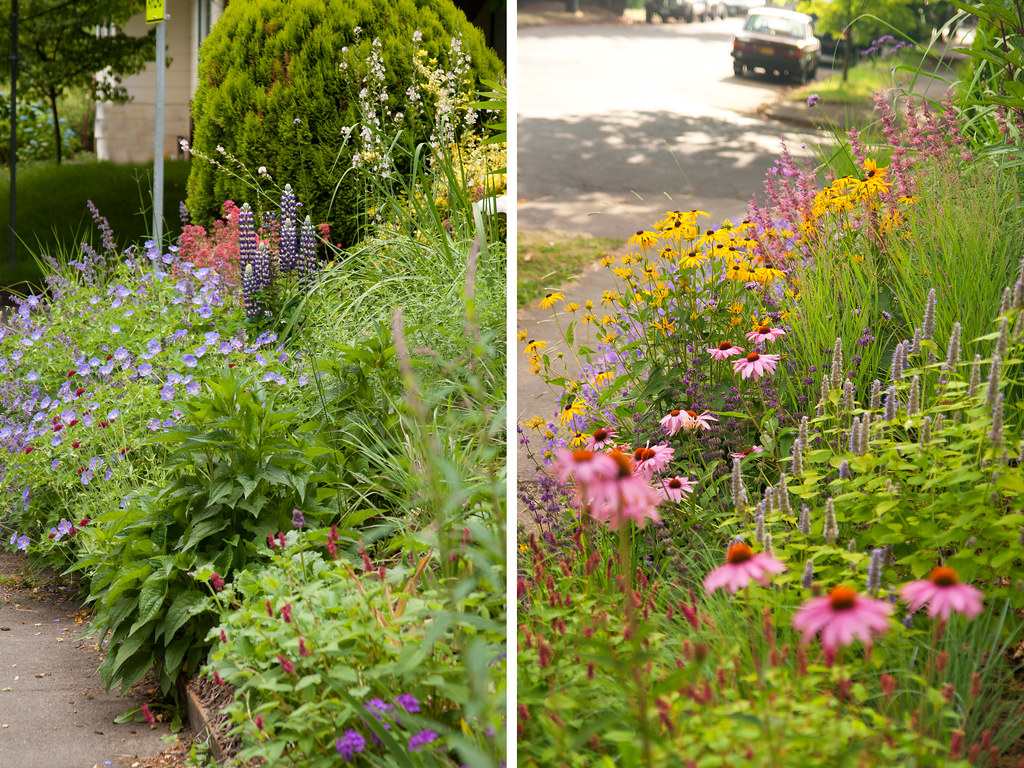 Side (North) Border in Late Spring (Top) and Midsummer (Bottom)
Side (North) Border in Late Spring (Top) and Midsummer (Bottom)
As the year wears on, the garden can change dramatically in mood. Above, the cool freshness of the late spring garden soon transitions to the rich, warm hues of summer. During the growing season, I find myself in the garden every day...constantly checking on things. My neighbors must seem it fairly odd, especially in early spring, when the garden is little more than sticks and mud. I find that while I enjoy the garden in the moment, I am always thinking forward to the next "stage" of the season. During the Tulips' reign, I look forward to the Echinacea...when the Echinacea bloom, I pine for the Agastaches. The anticipation is sweet, like the days leading up to Christmas when you're a kid!
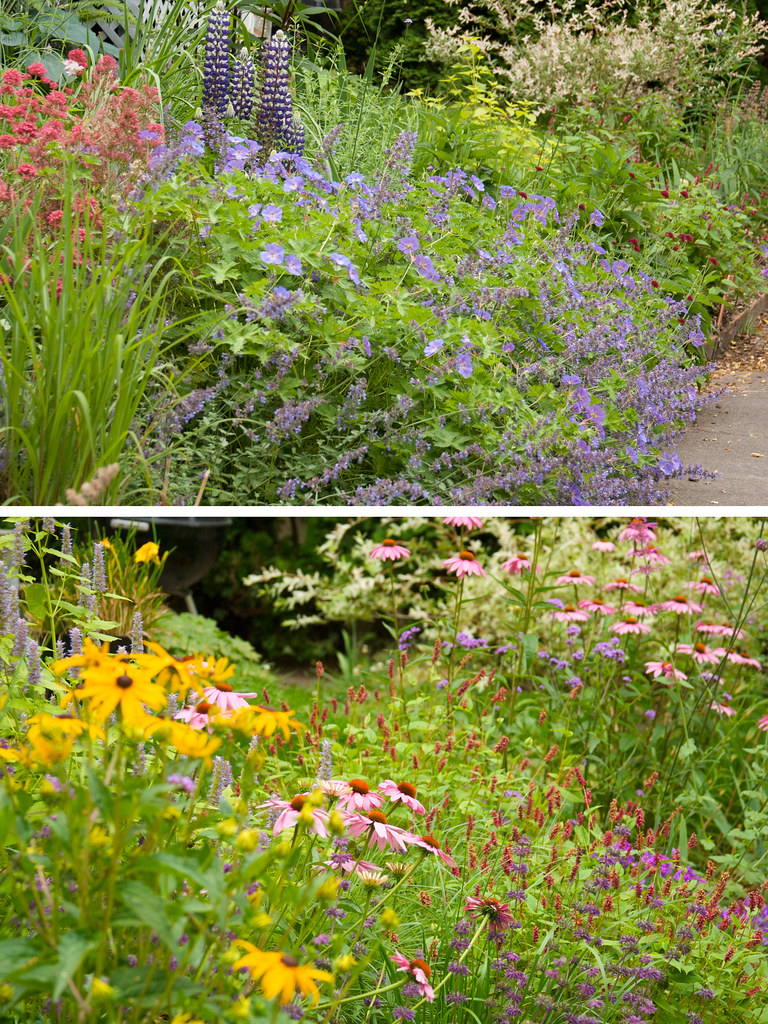 Side (North) Border in Late Spring (Top) and Midsummer (Bottom)
Side (North) Border in Late Spring (Top) and Midsummer (Bottom)
The same part of the garden as above, from the other direction. Again, I love how plants come into the spotlight during one season only to fade away as another group of plants asserts themselves. Planning for this succession of interest is one of the most challenging aspects of gardening, indeed, there are whole book written about it!
 Grouping A:
Grouping A:
Geranium 'Rozanne', Rudbeckia 'Goldsturm', Agastache 'Desert Sunrise' and Panicum 'Shenandoah'
Of course, this constant evolution takes place throughout the entire garden, but it can be fun to focus on small vignettes as well. Take the above example…while in summer the focus is on colorful blooms with their contrasting colors, shapes and sizes, as they fade, it's their shape and form that creates visual interest. As fall moves into winter, most of the plant material will fall away, leaving only bare branches.
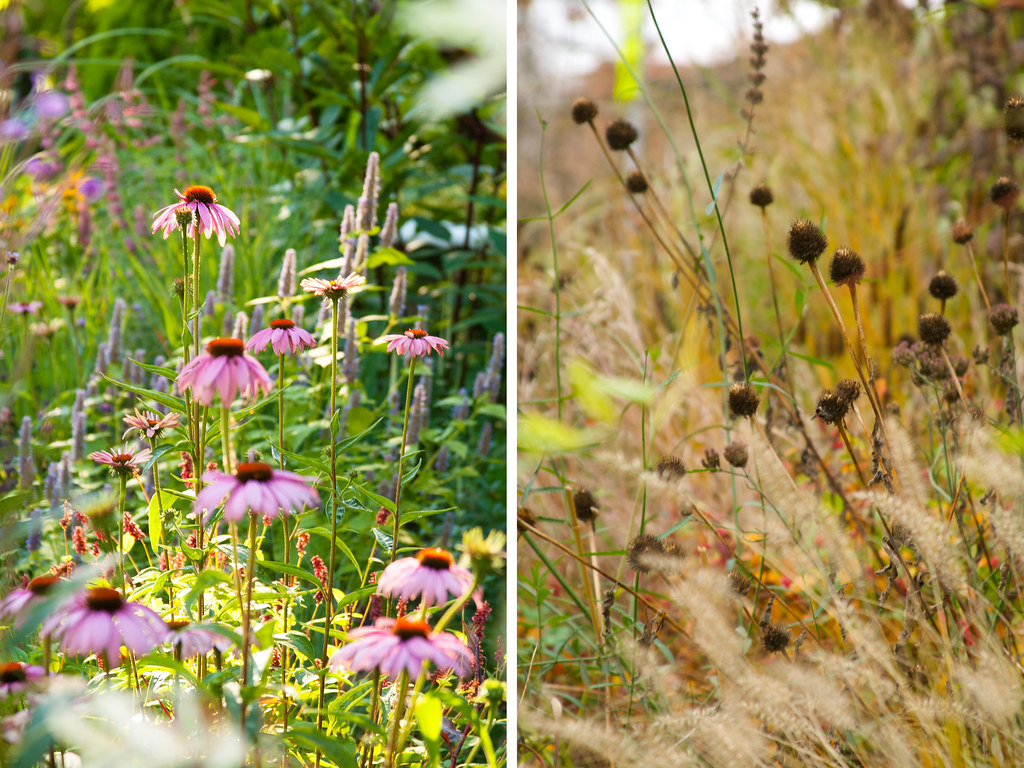 Grouping B:
Grouping B:
Echinacea purpurea 'Magnus', Pennisetum 'Hameln', Agastache 'Golden Jubilee', Panicum 'Shenandoah'
Above is another small grouping that whose progress I enjoyed throughout the seasons. In spring, bulbs such as Tulips and Alliums dominate. In summer, the above plants have completely overgrown the fading bulb foliage. While colorful and vibrant in summer, as these plants fade, the scene becomes more monochromatic and structure again becomes the key to the scene's interest.
 Side (North) Border in Spring, Summer, Fall
Side (North) Border in Spring, Summer, Fall
Above is the North Border during almost the entirety of a growing season. Missing, granted, is a shot of it in late Winter, right after I cut all the previous years growth back…at which time it's pretty much just mulch and dirt! I love seeing the constant parade of plants, continuously changing. Again, I'm always intrigued at how each group of plants passes on the baton to the next group as the season progresses. I'll be the first to admit that although my garden has lots of "winter interest", it's probably being generous to say it's "pretty"!
 Side (North) Border in Spring, Summer, Fall
Side (North) Border in Spring, Summer, Fall
Above is the North Border again, from the opposite direction. Again, love how we move from the (somewhat bare) spring display into the full, verdant glory of summer into the more melancholic decline of the garden in autumn. Winter, luckily, is quite short here in the PNW...it often feels as if we skip it entirely. Nevertheless, I think winter is as important as the other seasons in the garden, if for no other reason than it makes us appreciate summer all the more.
 Front (East) Border in Spring, Summer and Fall
Front (East) Border in Spring, Summer and Fall
The front border again from the beginning to the end of the growing season. This part of the garden is one that I've continually struggled with to get right. If it were a larger space, I might plant a few shrubs to provide a bit more structure…but I hate to block any of the already limited light to the rest of the garden. I've re-worked parts of the garden each year…working in more structural plants (mostly grasses) to help define the space more. At the height of summer, the lack of structure is inconsequential…but during other parts of the year, its absence is a definite drawback. As the years pass, and some plants start to attain their mature size, I'm having to re-evaluate the space as well…as these large plants block light from smaller plants around them. It's a constant balancing act, adding, subtracting and re-arranging. It's true what they say, a garden is never really "done".
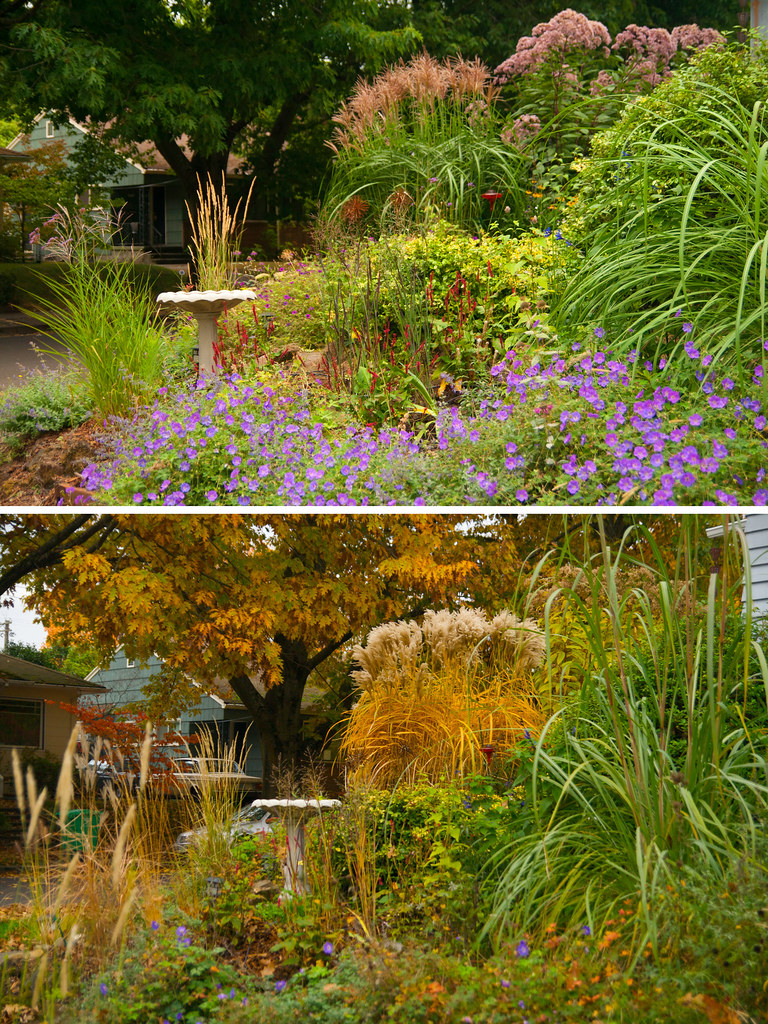 NE Corner section of garden in Late Summer (Aug 29) and Mid-Autumn (Nov. 11)
NE Corner section of garden in Late Summer (Aug 29) and Mid-Autumn (Nov. 11)
The two scenes above are just a little more that two months apart. It's amazing how much can change over the course of such a (relatively) short amount of time. In Portland, I usually think of August as "High Summer" when the garden is really in full swing. It's always hard to believe at that point that the slow slip into autumn is just around the corner. This is one part of the garden that has quite a bit of structure. I love, however, that even these very structural elements (The Miscanthus, Eutrochium and Saccarum especially) are in a constant state of change…never static. Even while they anchor this portion of the garden, they are, like everything else, completely transient.
Of course, every one of these photos, if I were to try to re-create them next year, would look very different, there is always that little bit of mystery and unpredictability. Also, no matter how much control I think I have over the garden, there are factors (like the vagaries of the weather) that are beyond my power to control...or even predict! They do say the only constant in life is change…but isn't that what makes us get out of bed each day…the "what if"? Similarly, isn't that at least part of what makes gardening such a fun, challenging (and sometimes frustrating) endeavor…the "I'll put these plants here, here and here…and see what happens!?!?"
Sometimes, in spite of all our planning, it seems that we gardeners merely set things in motion and then go along for the ride...but what a ride it is!
